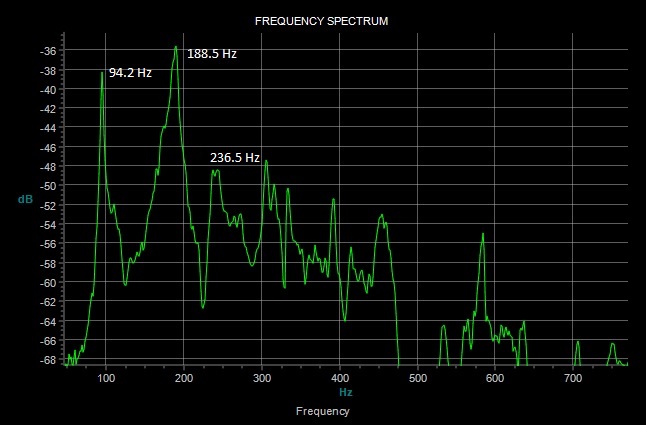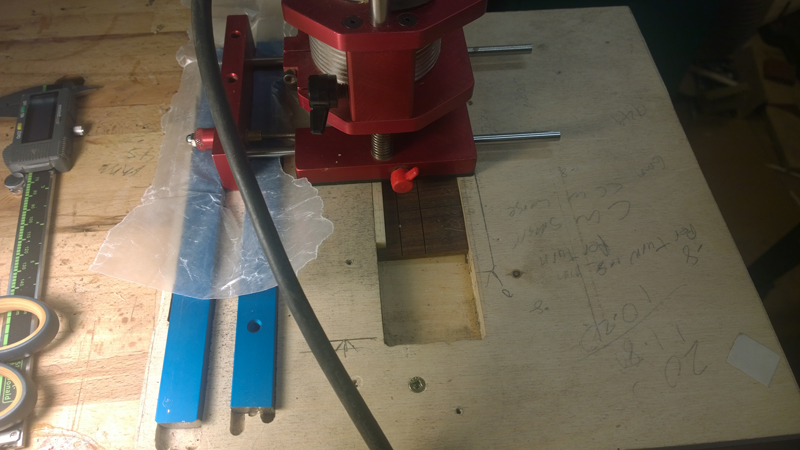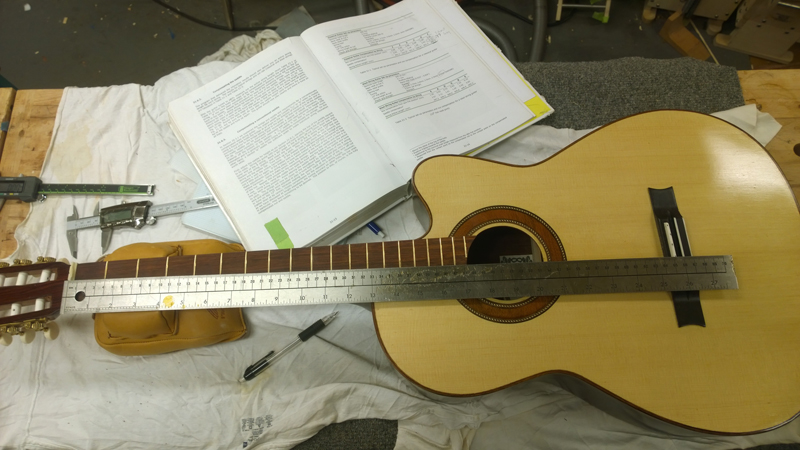Second Falcate Classical with strings!
-
Kevin in California
- Posts: 2803
- Joined: Mon Dec 19, 2011 4:19 pm
Re: Second Falcate Classical
Mighty nice John1
Re: Second Falcate Classical
Looks fantastic already - can't wait to see it polished!
Re: Second Falcate Classical
Looking sweet. I'm thinking of trying Royal-lac on my current project. I've only done tru oil so far.
JJ
Learning every day. And having fun doing it.
Learning every day. And having fun doing it.
-
John Parchem
- Posts: 2749
- Joined: Fri Dec 23, 2011 8:33 pm
- Location: Seattle
- Contact:
Re: Second Falcate Classical
John you will like Royal-lac
I made the compensated nut and saddle and strung the guitar up. The sounded sounded great about a half an hour after I put the first set of strings on. I am really excited to hear how it sounds over the next week. My target for the top was 190 Hz, almost got it. I ended up at 94.2 Hz for the T (1,1)1 188.4 for T (1,1)2 and 236.5 for the T(1,1)3. Graph below. I still need to clean up the nut and saddle buff out the finish, do a final set up in a couple of days. Also I will add a small dot on the side of the fret board at the 7 fret.


I sort of cheated on the compensation as I used the same scale length and the same strings that are in the classical guitar example in the book. I did not have to run the calculations. I made the compensated nut and then measured the active string length for each string and marked the saddle. I make the compensated nut a little differently than Trevor's method in the Book. I used my saddle slotting jig and my Bishop Cochran router base as a little milling machine. One turn of the set screw for the fence is equal to .8 mm. It is really easy to see it hit 1/8ths of a turn so I can cut with an accuracy to .1 mm or so. I leave a little extra compensation on the nut and fine tune once I have the nut mounted. I use a sharp chisel to nail the compensation numbers.





The Book has a table and tells how to make a table to calculate nut and saddle compensation based on scale length, strings and action. As I mentioned, I was able to use the example in the book. The table includes the active string length for each string. I used that measurement from the nut to mark out the saddle compensation.

I made the compensated nut and saddle and strung the guitar up. The sounded sounded great about a half an hour after I put the first set of strings on. I am really excited to hear how it sounds over the next week. My target for the top was 190 Hz, almost got it. I ended up at 94.2 Hz for the T (1,1)1 188.4 for T (1,1)2 and 236.5 for the T(1,1)3. Graph below. I still need to clean up the nut and saddle buff out the finish, do a final set up in a couple of days. Also I will add a small dot on the side of the fret board at the 7 fret.


I sort of cheated on the compensation as I used the same scale length and the same strings that are in the classical guitar example in the book. I did not have to run the calculations. I made the compensated nut and then measured the active string length for each string and marked the saddle. I make the compensated nut a little differently than Trevor's method in the Book. I used my saddle slotting jig and my Bishop Cochran router base as a little milling machine. One turn of the set screw for the fence is equal to .8 mm. It is really easy to see it hit 1/8ths of a turn so I can cut with an accuracy to .1 mm or so. I leave a little extra compensation on the nut and fine tune once I have the nut mounted. I use a sharp chisel to nail the compensation numbers.





The Book has a table and tells how to make a table to calculate nut and saddle compensation based on scale length, strings and action. As I mentioned, I was able to use the example in the book. The table includes the active string length for each string. I used that measurement from the nut to mark out the saddle compensation.

-
Kevin in California
- Posts: 2803
- Joined: Mon Dec 19, 2011 4:19 pm
Re: Second Falcate Classical with strings!
Pretty neat John.
